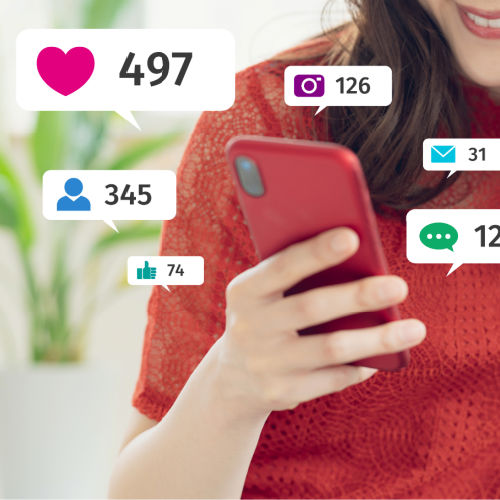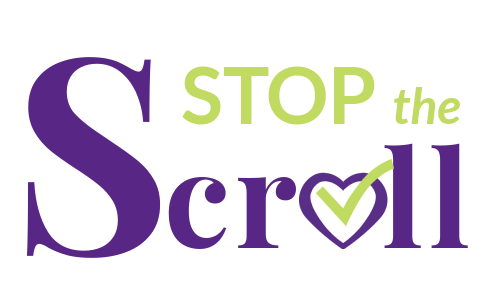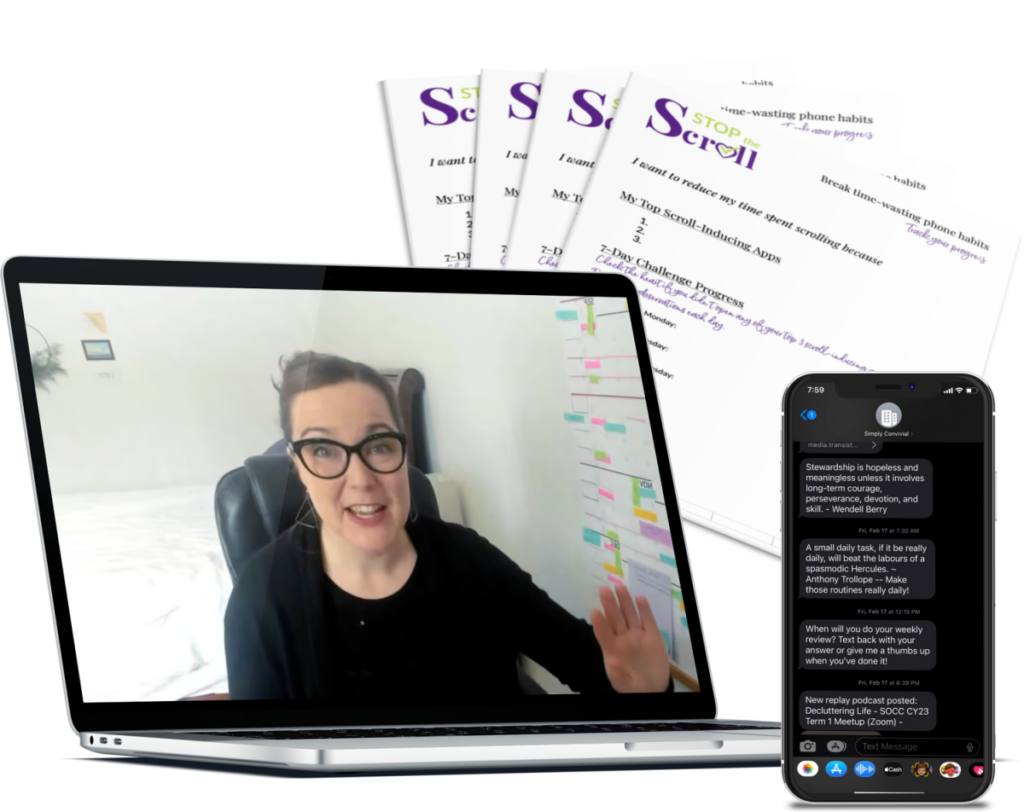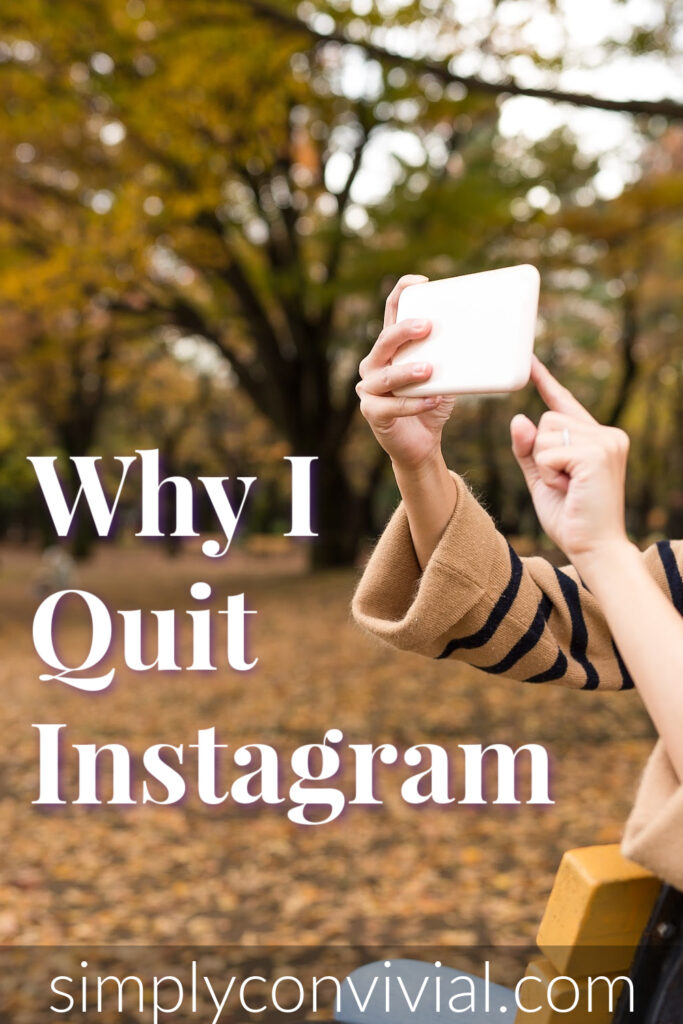
Is social media actually social? We think of social media as a connector, but is it delivering on that promise? Or is it simply redefining what we mean when we say and think social and connection?
When we pause to think and examine the realities rather than simply go along with the flow and keep up with others’ expectations, we ought to be taken abck. We ought not settle for such a shallow, superficial substitute for society and connection.
Looking at what someone you knew twenty years ago posts on her public bulletin board is not maintaining a friendship. Adding or receiving a few emoji clicks in response to an update is not conversation nor keeping up.
In fact, it’s addictive and decreases the quality of our connections overall. I have been finding that when I pick up my phone, without any intention or conscious choice, and even though I made Instagram take several extra actions to open on my phone, my fingers immediately do the little choreography and open Instagram if I’m not intentionally doing something else on my phone.
Then goodbye 10-20 minutes – and that’s with a pared down follow list and with rarely watching stories.
Those 10-20 minutes were not spent connecting, they were spent in mind-numbing, usually avoiding what I ought to be doing, somewhat counting it as “business” even though all I did was scroll and like.
I cut down my Instagram time a couple weeks ago, but when I opened up my Screen Time report, it said I had spent six hours that week on Instagram. Six hours.
Need help putting boundaries on social media?
Take the 7-Day “Stop the Scroll” Challenge!
Over the course of seven days, I’ll walk you through small steps to put boundaries around your phone use time, particularly those things that draw you in and waste your time.
Had Instagram delivered value to my life in return for those six hours? Because you know Instagram profited from those six hours. I started on IG before they had ads, before sponsored posts, and before Stories – and have watched steadily as the ratio of real to paid posts has increased rapidly.
But it’s like a frog in a boiling pot. It happens gradually, not all at once. We still get our reactionary dopamine hit, so we keep coming back and decide to ignore the fact that Instagram is not offering a service at all (except to advertisers). It is a platform to make ads palatable, like old-fashioned TV in the day, except with ads every minute instead of every 10.
While the promised value of social media platforms is the care and upkeep of dozens – or even hundreds – of “friendships,” the reality is that the money is in your data and the money is in you as a target for advertising.
The owners of social media platforms, news sites, and almost every website out there dangle out an enticing carrot they rarely fully deliver, while extracting actual significant value out of you as the workhorse that makes their business go. When we are on sites and platforms, we are being manipulated. We’re being fed half-truths and half-stories that keep us coming back for more. We’re being manipulated into wanting certain things, whether that’s a political ideology or the latest shape wear.
The producers of content – whether it’s on social media or news sites or web sites – have a goal for you and they are expert manipulators.
I think we tell ourselves half truths or untruths to justify easy, satisfying, empty behaviors. Social media is addictive and it confirms and builds apathy and acedia (at best, manufactured outrage at worst), not true human connection.
I’ve been off Facebook for years and never regretted it. As a business owner, I have a time-sucking and chain-jerking advertising and popularity channel simply written off, and it works. I do miss out on announcements and seeing what acquaintances are up to and thinking about. But I also totally miss out on faux-arguments and incivility that is any Facebook thread that isn’t simply vapid.
Need help putting boundaries on social media?
Take the 7-Day “Stop the Scroll” Challenge!
Over the course of seven days, I’ll walk you through small steps to put boundaries around your phone use time, particularly those things that draw you in and waste your time.
I found it was a lot easier to think well of people I barely knew when I didn’t see how they interacted and what they posted on Facebook. I got off Facebook to have the connection that is actually proper and appropriate for acquaintances and long-lost friends.
But Instagram was fun – until FB started meddling. Now it’s increasingly more like Facebook all the time, which ought not be a surprise, of course.
As an online business owner, it’s assumed that you must be on Facebook and Instagram or you’ll never be “discovered.” But the reality is that you’ll also never be discovered until you pay for this service from Facebook. They dangle out the carrot of “free” and “authentic” connection to casual friends and to business owners alike, and in both cases, they yank it and slap a pricetag on the carrot. If you’re a business, you pay if you want people to see your post. If you’re a consumer (and every user is), you are giving the value of your eyeballs.
Nope. They are not delivering value that is worth it – not for maintaining actual friendships and not as a business-owning content creator.
So here are ten reasons why I have quit Instagram. I ask you to examine your own use and value, but this is not a call for everyone to quit Instagram. Talk to your own husband, look at your own use cases, and come to your own conclusion. I don’t care if others are on Facebook or Instagram or not – or why they came to their decision. I have decided, with the encouragement of my husband, that Instagram is not a good use of my time or energy.
Reason #1: Instagram is an advertising platform.
It is not a platform of some other kind supported by advertising, but solely an advertising platform. Ads are treated as equally valid content to your friends posts. You’re taught, conditioned, to receive them as high quality content and not interruptions.
I expect soon IG will take the next FB step and require businesses to pay for “boosts” for their posts to be seen at all.
Reason #2: Instagram is peer-pressure.
News flash: What is popular is not what is reasoned, educated, and edifying. Instagram feeds are built to surface the posts that get the most views, likes, and comments. Popularity, however, is a bad indicator for what is valuable, edifying, and true.
Even ignoring such factors as active censorship, Instagram is not a neutral platform. You will always see the loudest, most envelope-pressing, most vanity-stroking posts – and you will not necessarily see all you actually opted in to see.
What you are seeing will be what the cool kids think you ought to see.
Reason #3: Instagram is not a place for civil discourse.
Like Facebook – not surprisingly – conversation on the platform has greatly deteriorated. Now, I personally interact with primarily normal, reasonable, generous, Christian people on Instagram. My DMs (not counting those from the creepsters I spend a chunk of time each week blocking) are fun and interesting and polite.
But as an audience member myself, when I click on the comments section of anyone with more followers than I have and see what people are saying about a thought-provoking post, it’s rather horrifying. And I wonder: Do I really want more followers? At some point you cross the line into attracting attention from those surfing Instagram to be mean and pick fights and yell loudly over you.
Instagram, like Facebook, is no place for actual conversation. But actual conversation is where growth and connection actually happen. So that means Instagram is not worthwhile for personal growth or relational connections.
Reason #4: Instagram is addictive.
Intentionally, unquestionably. Thus it is the perfect advertisement platform and arbiter/manipulator of public sentiment.
But beyond that, indulging in addictive behaviors is undeniably bad for your mental and emotional health, even if it’s just mindlessly scrolling and not a behavior that also destroys your physical health.
Reason #5: Instagram is a waste of life.
I couldn’t believe the week I checked that I had spent six hours on the app. I had thought – and I know I had – cut down on my use that week. I would have estimated that I spent maybe 3 hours per week, especially after I had my assistant help with responding to some of the DMs.
I had just been looking at my week, wanting to take an intense and involved class, and wondering how I’d fit it in. This class will not take 6 hours a week. I just reclaimed a good chunk of my life that can be used for building and connected brain cells rather than killing them.
Reason #6: Instagram connection is fake news.
In a time when in-person friendships have been put on hold, we have turned instinctively to social media, ignoring all the research that has been done to date that such practices are actually damaging to ourselves and our friendships, not helpful.
Reason #7: Instagram fuels depression.
It’s not even the comparison game (alone) that causes depression. It is not even (only) the fact that emotional mind-game posts get the most traction on the platform. It is not even (merely) the fast-paced shifting from one random claim to the next. It is not even (exclusively) the fake and exaggerated and divisive “news” stories and opinion pieces tucked between pictures of your friends’ babies.
Of course there’s also the superficiality and the practice of addictive behaviors that actively decreases our mental health.
On top of these reasons, philosophers have always known and taught that when you feel an emotion, however appropriate, in response to a situation, and yet can’t act on it in a meaningful way (and no social media response is actually meaningful), you actually deaden your ability to respond emotionally and appropriately across the board.
A few minutes a day on Instagram, and our emotional capital is blown, and we have nothing left for the real life demands we ought to be responding to.
From Time Magazine in 2017: Why Instagram Is the Worst Social Media for Mental Health
Need help putting boundaries on social media?
Take the 7-Day “Stop the Scroll” Challenge!
Over the course of seven days, I’ll walk you through small steps to put boundaries around your phone use time, particularly those things that draw you in and waste your time.
Reason #8: Instagram is full of creeps.
I spend 15-30 minutes a week, usually, blocking creepy or spammy or sketchy accounts from my followers list.
I don’t know what is happening in Gambia that every 20-something male there is now jumping onto Instagram and following homeschool moms, but I am not going to be party to whatever the scheme is.
Why wait until you get the weird “hello” direct message? Block the man claiming to be a nice and funny guy with military trappings from the get-go.
Those who have private accounts are wiser, especially if they are posting pictures of their kids.
Reason #9: Instagram is the ideal platform for social engineering.
It’s being used that way now by savvy operators, and it will only continue to be so more and more.
You will feel surrounded by people who think a certain way and promote certain agendas not because they are actually true or actually ubiquitous, but because they are driven by people who know how to work the system.
Reason #10: I’d prefer my content to be on a site I own.
Quitting Instagram will involve posting here more. For now I will still also be on YouTube as well, but am considering paying for Vimeo instead and will certainly be backing up all my videos on a hard drive. If it’s my content, I better be sure I actually have a copy of the files.
When others host content (photos, words, anything) for free, they can do with it what they will.
How do you follow people who have good, helpful, insightful thoughts if they aren’t (or if you aren’t) on social media?
- Subscribe to their blogs
- Subscribe to their podcasts
- Subscribe to their email lists.
Go to the source and subscribe in a way no one’s algorithm or advertisements are disrupting.
Where you can find me instead of Instagram
I will still be posting on the blog and on my podcast. I will still be posting, for now, on YouTube.
You should subscribe to my email list.
You can check here to see what I’m reading.
You can subscribe to my YouTube channel.
You can also find me participating in the communities at Scholé Sistership, Your Morning Basket, and Convivial Circle – places where the conversation is meaningful, encouraging, and edifying.
Back in the day, in the early 2000s, I learned a ton and made wonderful online friends by engaging in forums (OrganizedHome and Well Trained Mind) and commenting on my favorite blogs (Cindy Rollins, and a few others no longer around). There was something qualitatively different from these interactions than what is normal now online and certainly from social media. It has changed for the worse.
I know I can’t go back to old-school internet, but our communities do harken back to those days where the intellectual and emotional level of engagement was high.
So social media is an easy opt-out. Seriously. Everyone I know who takes an Instagram or Facebook sabbatical raves about how great it is. Why not take a permanent sabbatical? It is a move toward mental and emotional and even relational rest.
The reality is that the number of connections we can maintain and the amount of information we can consume is limited, though our tech gives us the illusion that it isn’t.
The more we make culling decisions and get realistic with our actual bandwidth, the better quality attention we’ll have to invest in our real life in our homes and communities.
Need help putting boundaries on social media?
Take the 7-Day “Stop the Scroll” Challenge!
Over the course of seven days, I’ll walk you through small steps to put boundaries around your phone use time, particularly those things that draw you in and waste your time.




